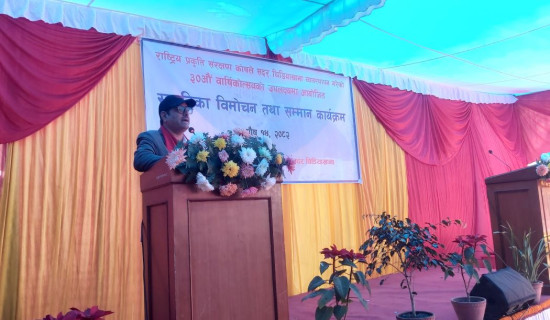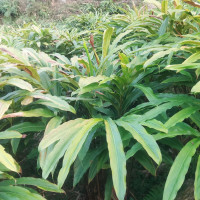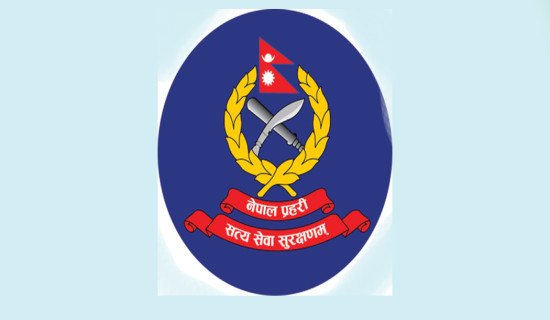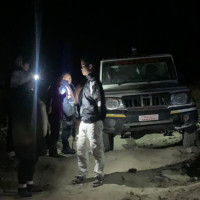- Monday, 29 December 2025
Rhino translocation gives beacon of hope
Kathmandu, Oct. 11: Nepal’s history of rhino translocation has been unsatisfactory, but the recent relocation of two rhino calves, Puspa and Anjali, from Chitwan National Park to Koshi Tappu Wildlife Reserve has sparked hope for the success of future efforts.
Pushpa and Anjali, orphaned female rhinos raised in the Kasara sector of Chitwan National Park (CNP), were translocated to Koshi Tappu Wildlife Reserve (KTWR) on September 26, 2023.
Nearly two weeks have passed since the translocation, and both rhinos are adapting well to their new environment. According to Ramesh Kumar Yadav, Chief Conservation Officer of KTWR, they are happily grazing alongside the elephants raised in KTWR during the day and returning to their shelter in the evening.
“They are currently housed in an enclosure spanning about three hectares of land, which includes wetland and grazing areas, as part of their re-wilding process. For their safety, they are placed in a different enclosure during the nighttime to mitigate potential threats. During the day, they are once again released into the wild in company of elephants, continuing their re-wilding journey,” Yadav explained.
The arrival of these two rhinos has had a positive impact on local tourism, reigniting interest in KTWR, which had previously lagged in tourism promotion.
According to Yadav, people have gained a newfound appreciation for KTWR’s ecology, which was previously not well understood. The presence of these beautiful rhinos has contributed to raising awareness and understanding of the reserve’s unique ecosystem.
These greater one-horned rhinos (Rhinoceros unicornis) were rescued from the Nawalparasi area of the park after being separated from their mothers. Pushpa was rescued in January 2020 from Tamasapur, while Anjali was rescued in April 2021 from Kujauli.
Why translocation?
Despite the historical challenges associated with rhino translocations, including high mortality rates due to disease, habitat adaptation difficulties, and poaching, Ajay Karki, Deputy Director General at the Department of National Parks and Wildlife Conservation (DNPWC), emphasized the importance of continuing these translocations as a vital tool for species management. “The initiative aimed to safeguard the species by ensuring viable populations in multiple habitats across the country, reducing the risk of disease and natural disasters,” he said.
Karki further stressed the necessity of translocation as an international practice. He noted that the risk of disasters such as forest fires and floods could lead to the extinction of species
concentrated in a single area. Therefore, translocation serves as a crucial strategy to mitigate such possibilities and ensure the survival of endangered species.
“As part of the conservation process, rhinos have previously been translocated to Bardiya National Park (BNP) and Suklaphanta National Park (SNP). However, the translocation efforts were particularly unsuccessful in SNP and BNP. A study conducted some time ago suggested that translocating rhinos to Koshi Tappu Wildlife Reserve would be a favourable habitat for rhinos. And in accordance with this report, two rhinos were moved to KTWR,” according to Karki.
As part of their re-wilding process, both Puspa and Anjali were released into the wild in May 2023. Unfortunately, they did not immediately adapt to the wild environment and instead began visiting human settlements and staying in close proximity to people.
“We made the decision to translocate them to a new habitat where they could experience a semi-wild environment initially, gradually transitioning to the truly wild environment,” Karki explained regarding their approach to the rhino relocation.
Why only female rhinos moved?
“At present, there are no semi-wild male rhinos with us to introduce to these two female rhinos. While there is one male rhino at the Central Zoo, it is not active and familiar with the wild. Our plan is to closely observe the daily behaviour of the two female rhinos in KTWR. Once we are confident that they are adapting well to the wild environment, we will identify potential male rhinos and subsequently translocate one or two males to join them in the area,” he outlined.
Translocation failure
From 1986 to 2023, a total of 102 rhinos have been relocated from Chitwan to three protected areas. Between 1986 and 2017, 95 rhinos were translocated to Bardiya, however, only 38 of them survived as of the 2021 census. In addition, between 2002 and 2017, nine rhinos were translocated to SNP and there are still nine rhinos in the park, with no increase in numbers since then.
As per Karki, the unsatisfactory outcomes of previous translocations were attributed to several factors. Many rhinos fell victim to poachers during the Maoist insurgency, while others were attacked by local residents in retaliation for crop damage. These challenges significantly contributed to the difficulties faced in ensuring the success of these translocation efforts.
According to the latest census, there are 752 rhinos inhabiting the four protected areas of the country.

















